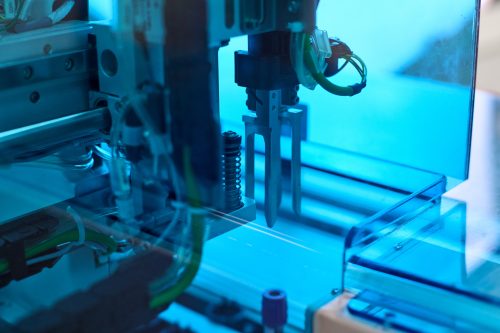
Unplanned downtime in manufacturing and other industries can be very costly, and 88% of organizations want to improve practices in order to prevent it. Hardware failures and malfunctions are common causes of unplanned outages; however, by improving the quality and versatility of regular inspections, many of these faults could be identified quicker and put right faster. Energy plants, construction sites and manufacturers are taking advantage of new technology to minimize human error and ensure more efficient inspections that will increase safety on site, help to pinpoint problems sooner, and keep productivity levels high.
AI Improves Machine Vision
Although human error is sometimes to blame for unplanned downtime, human decision-making is still superior when it comes to analyzing feedback from inspections. When the knowledge of experienced engineers is combined with advanced technology such as borescopes, an accurate overview of otherwise inaccessible industrial machinery and components can be compiled. Flexible viewing tools with the ability to photograph and record inspections can improve the efficiency of inspection processes and reduce repair downtime, as explained by SPI Borescopes.
In some circumstances, inspections can only be carried out by machine vision checking for faulty products. This is adequate for simple checks such as identifying scratches on a coating, but by combining machine vision with AI, the depth of quality checks can be improved. AI has the ability to learn how to better interpret visual information, so it can be used to replicate the superior analysis of the human brain and make quick, proactive decisions about repairs and adjustments that may be necessary.
Robots Inspect Complex Industrial Facilities
Analytics software has also been added to a new four-legged inspection robot recently launched by a Swiss company. The robot has been designed for use in power and processing plants that want to reduce downtime and increase safety but, at the same time, are struggling to carry out detailed inspections of their increasingly complex facilities. The autonomous robot is fitted with a range of sensors to measure visual, acoustic and thermal variables. In addition, because of its flexibility, it is able to maneuver itself into otherwise inaccessible areas, and can even climb stairs.
Safer Infrastructure Inspections With Drones
While robots gather information on the ground, flying drones improve the accuracy of aerial inspections of large industrial and construction sites. These sites can be hazardous for human workers with chemical emissions, moving machinery and high-voltage electrical equipment, so the use of drones also makes the completion of inspections much safer. One of the greatest hazards on a building site is falling from a height, but with flexible drones, climbing scaffolding, or scaling tall structures to view potential problems and repairs is is no longer necessary.
Regular inspections in the industry ensure that machinery, production facilities, and construction sites run smoothly with minimal downtime. With increasingly versatile inspection tools, potential problems, especially in areas that are difficult or dangerous to reach, can be identified sooner and with less risk to workers.
Interesting Related Article: ” Why should Importers hire a third-party inspection company in 2020?“

